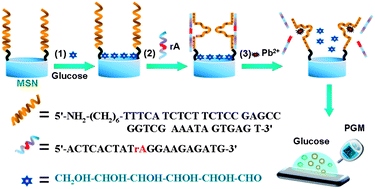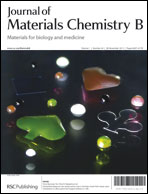Portable and quantitative monitoring of heavy metal ions using DNAzyme-capped mesoporous silica nanoparticles with a glucometer readout
Abstract
A portable and quantitative monitoring protocol for sensitive detection of lead ions is designed, based on target-responsive cargo release from Pb2+-specific DNAzyme-capped mesoporous silica nanoparticles (MSNs), by coupling with a widely accessible personal glucose meter (PGM). Initially, glucose molecules are loaded into the pores of the MSNs, the pores are then capped with Pb2+-specific DNAzymes. Upon target introduction, the molecular gates open, resulting in release of the cargo from the pores. The released glucose can be quantitatively monitored using a portable PGM. Under optimal conditions, the as-prepared sensing platform presents good analytical properties for the determination of the target Pb2+ ions, and allows detection of Pb2+ at concentrations as low as 1.0 pM. Importantly, the portable sensing platform has the advantages of simple, on-site, user-friendly and low-cost assessment and has tremendous potential for quantitative detection of non-glucose targets by the public.


 Please wait while we load your content...
Please wait while we load your content...